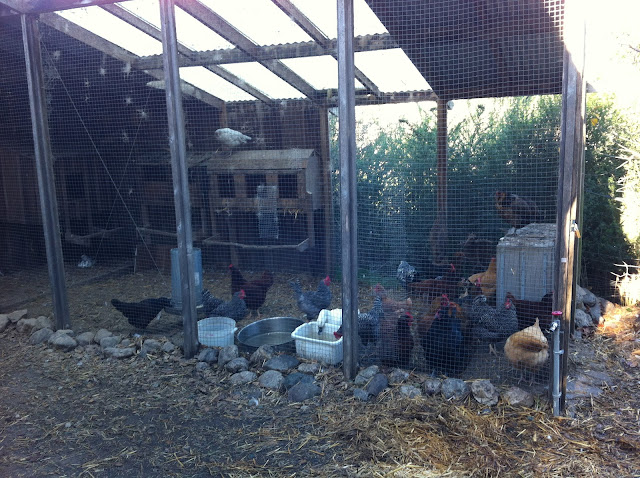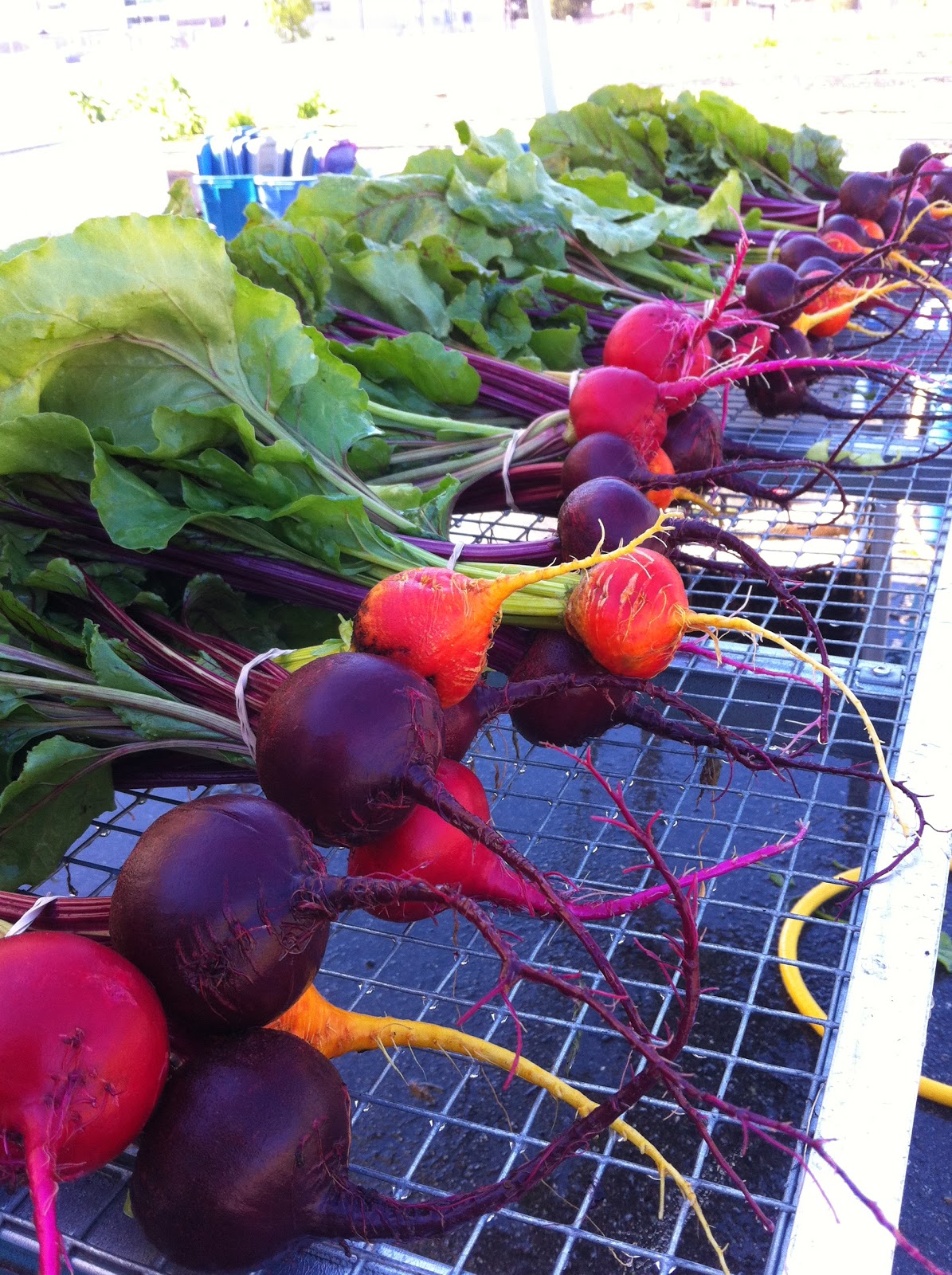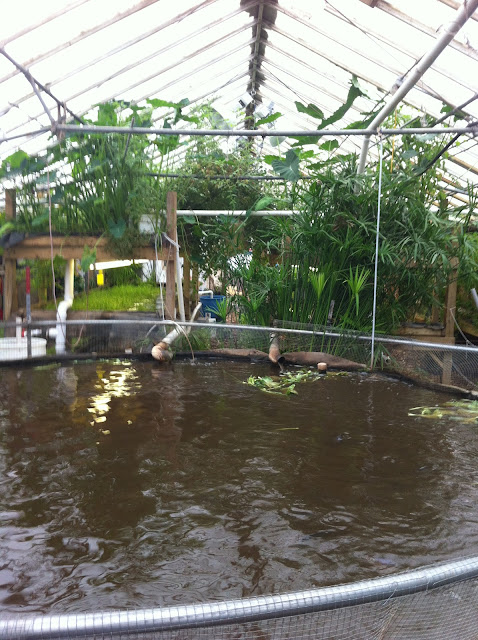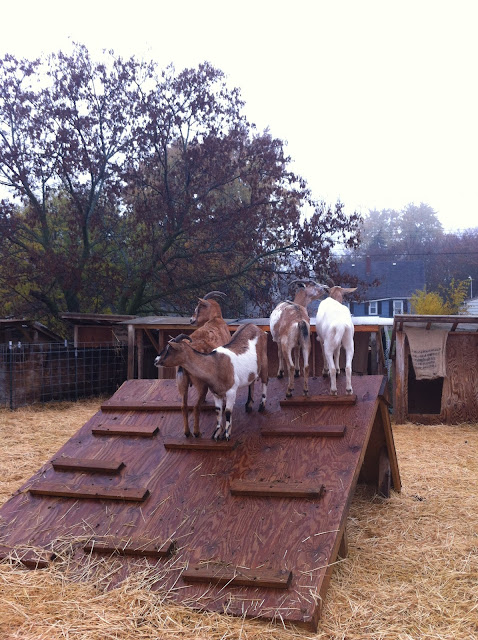Working in food literacy education these past couple years I always looked at the Edible Schoolyard and dreamed of seeing their work. This past winter I was lucky enough to take a tour of the Berkeley site. I took one million notes and was fascinated by hoe they make it all work. Here are the details. Totally dreamy!
How it Started
Alice Waters, of
the restaurant Chez Panisse, was quoted in a news article speaking about how to improve
food in local schools. She said that local MLK School in her neighbourhood was a perfect example of what
not to do – lots of pavement and neglected space. After reading it, school Principal Neil Smith
contacted Alice and invited her to come visit MLK and offer her support.
She discovered
that Neil had just recently planted a school food garden and was interested in
making his school better. As the third principal in 2 years – he knew his
school had a poor reputation and he was committed to creating a more positive
learning environment.
Alice identified
three ket areas for improvement:
- Students
needed to garden together
- Students
needed to cook and eat together
- Students
needed to eat real food in their cafeteria
Together they
decided that they couldn’t do it all at once, but they could start with the
garden. Alice found $10,000 to start the project, and Neil had one acre of paved
land on the school property that could be converted to garden space.
In 1995 they
stared by tearing up the asphalt and planting cover crops. They had one garden
teacher for the summer who came in and asked for the school’s 10 toughest
students. Together they built raised beds and began gardening on school
property. With student engagement they started to get buy-in from other
students in the school. The Garden includes a four pile compost systems, a chicken
coop, tool shed with mobile tool racks and lots of fruit trees and vegetable
garden beds.
In 1997 they
started their Kitchen program in an old cafeteria in the school. They soon
renovated an old building that was right beside the garden so that the kitchen
and cooking programs could take place directly beside the garden – students
would harvest their fresh produce and take a few short steps to prepare their
harvest.
The Dining Commons is part of the School Lunch
Initiative, which is a Public-Private partnership between the Centre for Eco-Literacy,
The Chez Panisse Foundation and the Berkeley Unified School District.
 |
| Schoolyard Propagation. |
How It Works – The Garden:
The one-acre
garden serves all students in the school and connects to their science
curriculum. The Garden sees each grade for a six week cycle at a time. In each
week, every grade 6 science class will visit the garden for one 90 minute
session. After a six week cycle (six visits for each class) the Grade 7
students will participate in garden sessions. After the Grade 8 students cycle through, the Grade 6
students start again.
Each session is
90 minutes long so to provide enough time for students to really get into their
garden task and ensure enough time for clean up and wrap up. The Science
teacher attends and participates in each session. They do not facilitate the
lesson (the Garden Teachers do this,) but they find it is easier to draw
connections to what they are working on in the classroom and ensure that the
sessions are relevant to their other class work.
Garden Lessons
usually have a ratio of 30 students, 1 Garden Teacher, 1 Classroom teacher and
a volunteer or intern. Content comes from California Science Curriculum. Some
are also connected to Edible Schoolyard Standards.
 |
| 4 Pile Compost System - Very different regulations for Berkeley schoolyards! |
All sessions
start with an opening circle of around 5-15 minutes where that day’s concept is
introduced. They then introduce the seasonal garden tasks for that day that
need to be done. Garden Teachers are sure that the work they ask students to do
is real work that needs to be done – they do not give out “busy work.” Students
self-select into work groups that last about 45 minutes. Tasks could include
watering, harvesting, mulching, composting or caring for the chickens. Tasks
such as mowing are left for adult volunteers. Garden Teachers do have a guiding
question – if a task cannot be done by a student, is it necessary to have in
the garden? Sessions end with a closing circle where they revisit curricular
concepts or questions about work tasks. Closing circle often includes a tasting
of a fruit or veg that was harvested that day. Students are encouraged to try
and describe their taste with a sensory work rather than an opinion word. (ie.
slimy vs. gross)
 |
| Schoolyard chickens - free range during the day, they get the garden to hang out in. |
 |
| A well-stocked, warm, delicious smelling kitchen! |
How it Works – The Kitchen:
The Kitchen has
three large square tables in the space. The walls are covered in posters and
pictures of food, plants, recipes and images of healthy cooking. There are
shelves of cookbooks for students to use as well as a piano that students can
play during dishes. There are a few stoves, sinks and one large commercial
dishwasher. Kitchen Kits are made out of wood and include a set of commonly
used tools – there is one kit for each table.
At the start of
each session, students and teachers gather around the central table for a
“Chef’s Meeting.” They introduce both the Humanities curricular concepts as well as the
dishes that are going to be prepared that day. When I visited, they were
studying African Heritage and cooking a Black Eyed Pea Stew.
The students are split into 3 Families – each at their own table. The Kitchen Teachers,
Volunteers and Classroom Teacher are split evenly among the three groups. They
each make the same recipe – each table acting as a cooking station.
Students are
responsible for preparing all aspects of the dish as well as setting the table
with tablecloths, a centrepiece, water glasses and all cutlery. Once the meal
is ready and the table is set, they sit down to eat as a family. They try to
teach common social conventions of eating – such as waiting until the whole
table has been served before trying their food. Everyone gets an equal portion
of the dish, and then seconds are given out after everyone eats together.
Conversation
cards are used at each table to help to facilitate good communication skills
around eating in groups. The questions are meant to be provocative for a middle
school student – such as “would you rather work at a job you love that paid
little money, or a job you hate that pays lots of money?” The teachers are all
apart of the family meal and participate in the conversation lead by the
students.
Dishes are done
by one family (and they often argue over who gets to do it because they enjoy
the big commercial dish washer!) Tables are cleaned up and students not doing
dishes are encouraged to read cookbooks, chat with their family or play the
piano.
The session
closes with a concluding chef’s meeting where as a group they talk about their
meal prepared and curricular connections for the lesson.
Each cooking
session has to include at least one item from the garden – they try to create
dishes that have a majority of either ingredients from the garden or
ingredients that could be grown in their garden (ie. would work in the local
environment.)
 |
| Kitchen Kits - each family of students gets one of these to use. |
How It Works – The Dining Commons:
 |
Locally sourced, scratch made hot dishes
+ a salad bar, every day. |
The Dining
Commons in the school prepares from-scratch lunches for the Berekley Unified
School District. They function as a central kitchen for both the MLK student’s
lunch, but also other schools in the district. At the school, they feed 500
students.
There is a focus
on fresh, local ingredients. If an item is not made in house, they are supplied
by a local purveyor. For example, samosas and buns are made by a local baker
so that they prioritize supporting the local economy – and so that they can work with
that local baker to ensure the ingredients and nutrition content meet government nutrition standards. They provide organic milk from a local farm, all meat is from raw and
there is always vegetarian options and vegetarian days.
The cafeteria
tries to be as low waste as possible – they use real dishes instead of
disposable and all food scraps go to the onsite garden and other local compost
programs. Students sort their waste at the end of the meal, and the success of
this is in part to their understanding of composting from their time in the
garden.
Executive Chef
Bonnie Christensen has been very successful in creating dishes that the students
actually eat. She does this by involving them throughout the year in the meal
planning process. She provides “What’s on Your Plate” tastings for the
nutrition classes where students taste the menu items and give their feedback.
This could be three varieties of a dish such as coleslaw, or tasting a new menu
item such as samosas. Bonnie notes that the students will always eat more of
the food offered if they get to see it and taste it before getting to the Dining
Room.
The project took a large investment in the beginning to outfit the building, but now does not rely on donations – it is able to financially break even. Bonnie says she runs it like a restaurant and tries not to rely on subsidies or funding.
 |
| The beautiful place where students eat lunch! Lots of funding went into this space. |
Resources
The Edible Schoolyard recently re-modeled their website and have created a hub of food literacy resources from across North America. You can access many of their lesson plans and publications, but the part I love the most is teachers, schools and small non-profits from across the country and signing up and sharing their own workshops, lesson plans and activity outlines. They are creating a real centre for folks to access food literacy resources for all grades, connected to every subject and coming from a variety of school gardens. There is some really lovely, innovative stuff on there!







































